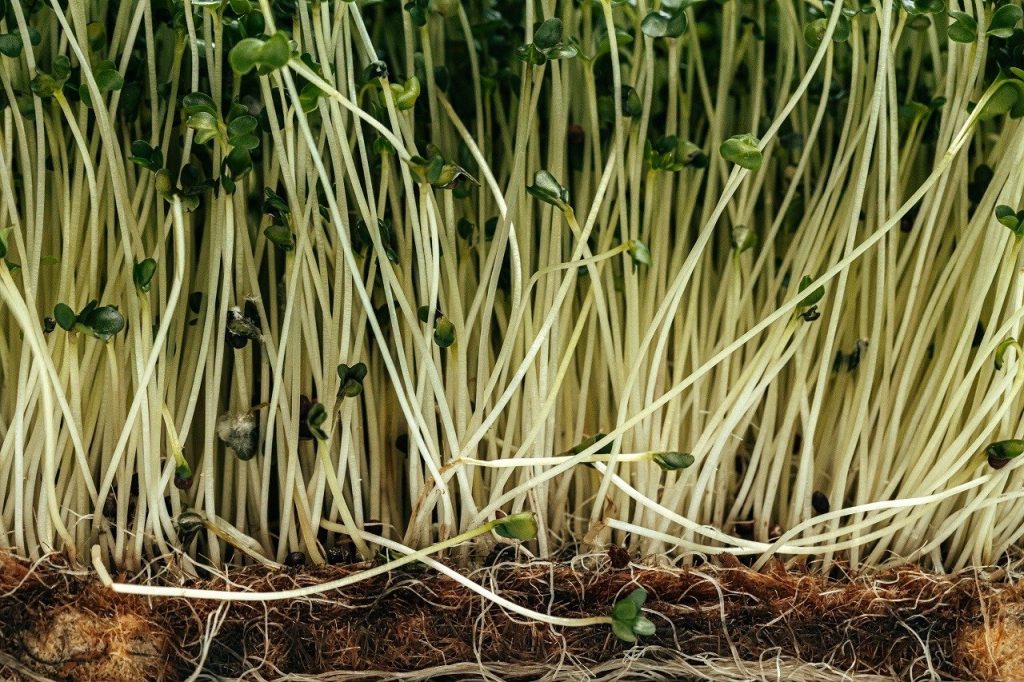Strategies for Managing Soil Acidity and Promoting Plant Growth at Home

Unlocking the Secrets of Soil Health
Understanding soil acidity is crucial for any home gardener aiming to achieve vibrant plant growth. Soil that is too acidic can hinder nutrient availability, stunting growth and reducing crop yields. By exploring key strategies for managing soil acidity, you can create a thriving garden ecosystem.
The Importance of Soil pH
Soil pH plays a vital role in plant health, directly impacting everything from germination to yield. Here are several reasons why monitoring and managing pH levels is essential:
- Nutrient availability: Different nutrients are made available to plants at specific pH levels. For instance, nitrogen, phosphorus, and potassium are more accessible in neutral soils (pH 6.0 to 7.0). Conversely, soils with a pH lower than 6.0 may experience deficiencies in crucial nutrients like calcium and magnesium, affecting overall plant health.
- Microbial activity: Soil pH influences the activity of beneficial microorganisms that aid in nutrient cycling. Healthy microbial populations thrive in soils with a pH between 6.0 and 7.5. These microorganisms not only enrich the soil but also help decompose organic matter, making nutrients available for uptake by plants.
- Root development: Optimal pH levels promote robust root systems, enhancing water and nutrient uptake. A well-developed root system allows plants to access a larger volume of soil, leading to better growth and resilience against environmental stresses.
Strategies to Promote Growth
To improve soil acidity and foster robust plant growth at home, consider these effective practices:
- Testing soil pH: Regular soil testing is fundamental and can be easily performed with a DIY soil test kit available at local gardening stores or through university extension services. Awareness of your soil’s acidity allows you to address any imbalances proactively before they impact plant health.
- Amending soil: If your soil test reveals overly acidic conditions, consider incorporating materials like lime, which can effectively raise the pH. On the other hand, organic matter such as compost not only helps to buffer pH but also improves soil structure, promoting better drainage and aeration.
- Diverse planting: Employing a variety of plants in your garden can balance nutrient uptake and improve soil structure. For example, planting legumes can naturally increase nitrogen levels in the soil, benefitting other crops planted nearby. Crop rotation and polyculture practices can contribute to sustained soil health.
By implementing these strategies, you can create a healthier garden that not only thrives but also contributes to the broader ecological system around you. Understanding the interplay between soil pH and plant health equips gardeners with the knowledge to enhance their gardening experience. Embrace these methods, and watch as your garden flourishes, fostering a vibrant ecosystem right in your backyard.
DISCOVER MORE: Click here to learn about soil biodiversity

Proven Strategies for Enhancing Soil pH
Managing soil acidity is not merely a task but rather an engaging journey into the science of gardening. Achieving optimal soil pH can mean the difference between a flourishing garden and one struggling to survive. By implementing effective strategies and enriching your garden’s soil, you can unlock the full potential of your plants.
Understanding Soil Amendments
Soil amendments are materials added to improve soil properties, and they play a crucial role in managing acidity. Here’s how different amendments can help:
- Calcium carbonate (lime): A common choice for neutralizing acidic soils, lime is effective because it increases pH levels, bringing beneficial nutrients into play. It’s important to select the appropriate type of lime, such as agricultural lime for slow release or quicklime for immediate effect, based on your soil’s needs.
- Wood ash: Rich in potassium and calcium, wood ash can slightly raise soil pH while also adding vital nutrients. However, it is essential to avoid over-application, as too much can lead to nutrient imbalances.
- Garden compost: Providing a balanced mix of nutrients, adding compost not only buffers acidity but enhances soil structure by promoting healthy microbial activity. Rich in organic matter, compost contributes to the overall fertility of your garden.
Encouraging Beneficial Microbial Communities
Fostering a thriving microbial community is paramount for managing soil acidity. Healthy microbes not only combat soil acidity but also improve nutrient availability for plants. A few strategies to promote beneficial soil microorganisms include:
- Regularly adding organic matter: Incorporating organic materials such as compost, mulch, or well-rotted manure can create an environment conducive to microbial life. These inputs feed microorganisms and improve soil tilth.
- Avoiding chemical fertilizers: While they may provide immediate results, chemical fertilizers can harm beneficial microbes in the long run. Shifting towards organic fertilizers can maintain microbial health, which is essential for sustainable soil management.
- Cover cropping: Planting cover crops in the off-season can enhance microbial diversity and stability in the soil. Crops such as clover or rye not only prevent soil erosion but also contribute additional organic matter when tilled under.
By understanding and embracing these strategies for managing soil acidity, home gardeners can cultivate a balanced ecosystem that supports robust plant growth. Each approach contributes to a richer, healthier garden soil while promoting an environment that vibrantly sustains plant life. This holistic view of gardening underscores the interconnectedness of soil health and plant success, inviting you to explore the potential of your own garden.
Strategies for Managing Soil Acidity and Promoting Plant Growth at Home
When it comes to achieving a bountiful home garden, understanding soil acidity is crucial. Soil pH plays a significant role in nutrient availability for plants. Here, we delve into effective strategies for managing soil acidity and enhancing plant growth, equipping you with tools to cultivate a thriving green space.
| Category | Details |
|---|---|
| Soil Testing | Perform soil tests to determine pH levels and identify specific nutrient needs of your plants. |
| Amendments | Incorporate lime to raise pH and create a more neutral environment that favors plant growth. |
| Organic Matter | Add compost or well-rotted organic materials to improve soil structure and enhance nutrient retention. |
| Mulching | Apply a layer of organic mulch to conserve moisture and regulate soil temperature, affecting pH stability. |
| Crop Rotation | Implement crop rotation to prevent soil depletion and maintain balanced acidity levels. |
Implementing these strategies will not only allow for better management of soil acidity but also promote sustained plant growth, providing a lush and fruitful gardening experience. Embrace these tactics and watch your home garden flourish with vigor and vitality!
DIVE DEEPER: Click here to uncover more about sustainable gardening
Implementing Practical Soil Management Techniques
Once you understand the role of soil amendments and microbial communities in managing soil acidity, it’s time to delve into practical techniques that can help you achieve your gardening goals. By embracing efficient soil management practices, you can significantly enhance soil health and create a thriving environment for your plants.
Testing and Monitoring Soil pH
Before making any amendments, it is crucial to establish a baseline through regular soil pH testing. This step ensures that any changes made are informed and targeted. Home testing kits are widely available at garden centers or online, providing an easy and cost-effective means to gauge soil acidity. Maintaining optimal pH levels can avert issues associated with excessive acidity or alkalinity.
- Timing matters: Conduct soil tests in early spring or late fall to assess soil conditions before planting or to prepare for future crops. This allows you to monitor changes and determine the effectiveness of applied amendments.
- Record results: Keep a gardening journal that documents pH levels, amendment applications, and plant performance over the seasons. This data can provide invaluable insights into the ongoing health of your soil.
Utilizing Mulching Techniques
Mulching serves multiple functions, ranging from moisture retention to weed control, but it can also play an essential role in managing soil acidity. Organic mulches, such as wood chips, straw, or shredded leaves, break down over time and introduce organic matter back into the soil. This organic matter not only helps buffer pH but also aids in nutrient cycling, benefiting your plants in the long term.
- Layer wisely: Apply a 2 to 4-inch layer of organic mulch around plants while ensuring that it’s not piled against stems. This practice helps maintain consistent moisture levels and temperature while preventing soil erosion.
- Choose carefully: Some materials, such as pine needles or certain hardwood barks, may contribute to acidification. Ensure that the mulch you select aligns with your garden’s needs and overall soil management goals.
Implementing Crop Rotation and Diversification
Diversifying your plant choices through planned crop rotation can naturally enhance soil health and manage acidity levels. Certain plants contribute specific nutrients back into the soil, while others can help loosen compacted soil, improving drainage and aeration.
- Legumes: Including leguminous plants like peas and beans in your rotation can fix nitrogen in the soil, enriching nutrient availability for subsequent crops. This can help balance out the effects of more acidifying plants.
- Deep-rooted plants: Incorporate plants with deep root systems, such as sunflowers or comfrey, to break up compacted soils and enhance micronutrient accessibility. Their organic matter returns to the soil once they decompose, helping to buffer pH.
By actively incorporating these practical soil management techniques, you can continuously improve your garden’s soil conditions. These strategies not only contribute to managing soil acidity but also promote a holistic approach to gardening, inviting you into a realm where your plants can truly thrive. Explore these methods to enlighten your gardening journey, and witness how each practice intertwines to build a more resilient and fruitful garden ecosystem.
DISCOVER MORE: Click here to learn how to adapt your vertical garden for every season
Conclusion
In the pursuit of a flourishing garden, understanding strategies for managing soil acidity is paramount. Through practical measures like soil pH testing, appropriate mulching techniques, and strategic crop rotation, gardeners can create a healthy foundation that fosters vibrant plant growth. Regular monitoring will not only guide amendment decisions but will also enhance the long-term health of the soil ecosystem.
The incorporation of organic materials as mulch not only aids in moisture retention but also enriches the soil, combating acidity while addressing other gardening challenges. By choosing the right plants, including legumes and deep-rooted species, you can improve soil structure and nutrient content, forging an environment conducive to growth.
Ultimately, managing soil acidity doesn’t have to be a complex endeavor—it can be accomplished through thoughtful techniques that promote a holistic approach to gardening. Engaging with your soil, acknowledging its needs, and being proactive in management can transform your outdoor space into a thriving landscape. Each method discussed serves as a stepping stone towards achieving a more sustainable and productive garden.
As you venture forward, armed with these strategies, remember that effective soil management is not a one-time effort but a continual journey. Embrace the opportunity to experiment, learn, and adapt—your plants will surely reward you with their growth and beauty. Discover the interconnectedness of these practices, and your garden will flourish like never before.


